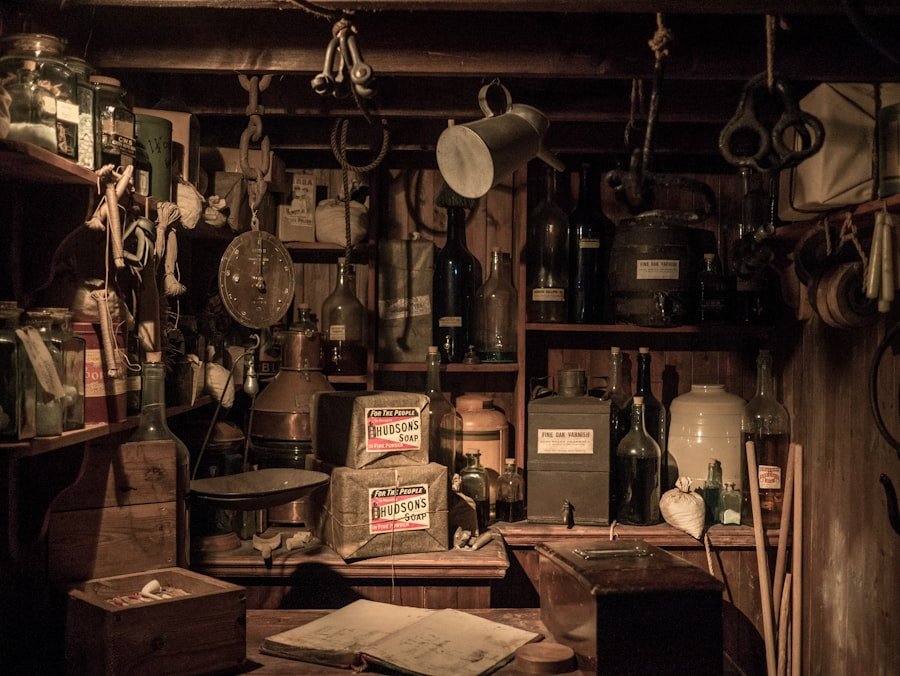In the rapidly evolving landscape of retail, the advent of smart shelf analytics has emerged as a transformative force, reshaping how retailers manage inventory and enhance customer experiences. Smart shelf analytics refers to the integration of advanced technologies, such as Internet of Things (IoT) devices, artificial intelligence (AI), and data analytics, to monitor and optimise product placement on store shelves. This innovative approach not only streamlines inventory management but also provides valuable insights into consumer behaviour, enabling retailers to make data-driven decisions that can significantly impact their bottom line.
The concept of smart shelf analytics is rooted in the need for retailers to adapt to changing consumer preferences and the increasing complexity of supply chains. As shoppers become more discerning and demand personalised experiences, traditional methods of inventory management are proving inadequate. Smart shelf analytics offers a solution by providing real-time data on product availability, customer interactions, and sales trends.
This technology empowers retailers to respond swiftly to market dynamics, ensuring that they remain competitive in an increasingly crowded marketplace.
Summary
- Smart Shelf Analytics is a technology that uses sensors and data analytics to provide real-time insights into product availability and customer behaviour in retail stores.
- It works by using sensors to detect when products are picked up or put back on the shelf, and then analyses this data to provide insights into customer behaviour, inventory management, and product placement.
- The benefits of Smart Shelf Analytics include improved inventory management, reduced out-of-stock situations, enhanced customer experience, and increased sales and profitability for retailers.
- Smart Shelf Analytics can be applied in various retail settings, including supermarkets, convenience stores, pharmacies, and electronics stores, to improve operational efficiency and customer satisfaction.
- Implementing Smart Shelf Analytics in retail requires investment in sensor technology, data analytics software, and staff training, but can lead to significant improvements in store performance and customer satisfaction.
How Smart Shelf Analytics Works
At the core of smart shelf analytics lies a sophisticated network of sensors and devices that collect data on various aspects of shelf performance. These sensors can detect stock levels, monitor product placement, and even track customer interactions with products. For instance, weight sensors can determine when a product is running low, while cameras equipped with image recognition technology can assess whether items are correctly positioned on the shelf.
This data is then transmitted to a centralised system where it is analysed using advanced algorithms. The analytical component of smart shelf analytics plays a crucial role in transforming raw data into actionable insights. By employing machine learning techniques, retailers can identify patterns in consumer behaviour, such as peak shopping times or popular product combinations.
This information allows for more informed decision-making regarding inventory replenishment, promotional strategies, and product placement. For example, if data reveals that a particular snack is frequently purchased alongside a specific beverage, retailers can strategically position these items together to encourage cross-selling.
Benefits of Smart Shelf Analytics

The implementation of smart shelf analytics offers a multitude of benefits for retailers seeking to optimise their operations. One of the most significant advantages is improved inventory management. By providing real-time visibility into stock levels, retailers can reduce instances of out-of-stock situations, which not only frustrates customers but also leads to lost sales opportunities.
With accurate data on product availability, retailers can ensure that popular items are always in stock, thereby enhancing customer satisfaction and loyalty. Additionally, smart shelf analytics facilitates better understanding of consumer preferences and shopping behaviours. Retailers can leverage this information to tailor their marketing strategies and product offerings.
For instance, if analytics indicate that a certain demographic is purchasing more organic products, retailers can adjust their inventory to include a wider range of organic options. This level of responsiveness not only meets customer demands but also positions retailers as forward-thinking entities that prioritise consumer needs.
Applications of Smart Shelf Analytics
Smart shelf analytics finds applications across various retail sectors, from grocery stores to fashion outlets. In grocery retailing, for example, the technology can be employed to monitor perishable goods, ensuring that items are sold before they expire. Sensors can alert staff when products are nearing their sell-by dates, allowing for timely markdowns or promotions to minimise waste.
This not only enhances operational efficiency but also contributes to sustainability efforts by reducing food waste. In the fashion retail sector, smart shelf analytics can be utilised to track customer interactions with clothing items. By analysing data on which items are frequently tried on but not purchased, retailers can gain insights into consumer preferences and adjust their inventory accordingly.
Furthermore, this technology can assist in optimising store layouts by identifying high-traffic areas and strategically placing popular items to maximise visibility and sales potential.
Implementing Smart Shelf Analytics in Retail
The successful implementation of smart shelf analytics requires careful planning and consideration of various factors. Retailers must first assess their existing infrastructure and determine the necessary technological upgrades needed to support smart shelf systems. This may involve investing in IoT devices, sensors, and data analytics platforms that can seamlessly integrate with current operations.
Training staff is another critical aspect of implementation. Employees must be equipped with the knowledge and skills to utilise the new technology effectively. This includes understanding how to interpret data insights and make informed decisions based on those insights.
Retailers may also need to establish protocols for responding to alerts generated by the smart shelf system, ensuring that stock levels are maintained and customer needs are met promptly.
Challenges and Limitations of Smart Shelf Analytics

Despite its numerous advantages, smart shelf analytics is not without its challenges and limitations. One significant hurdle is the initial investment required for technology deployment. Retailers may face substantial costs associated with purchasing sensors, installing IoT devices, and integrating new software systems into their existing infrastructure.
For smaller retailers with limited budgets, these costs can be prohibitive. Moreover, data privacy concerns pose another challenge in the realm of smart shelf analytics. As retailers collect vast amounts of consumer data, they must navigate complex regulations regarding data protection and privacy.
Ensuring compliance with laws such as the General Data Protection Regulation (GDPR) is essential to maintain customer trust and avoid potential legal repercussions. Retailers must implement robust security measures to safeguard sensitive information while still leveraging data for analytical purposes.
Future Trends in Smart Shelf Analytics
Looking ahead, several trends are poised to shape the future of smart shelf analytics in retail. One notable trend is the increasing integration of artificial intelligence and machine learning capabilities into smart shelf systems. As these technologies continue to advance, retailers will be able to harness even more sophisticated algorithms for predictive analytics.
This will enable them to anticipate consumer behaviour more accurately and optimise inventory management accordingly. Another emerging trend is the growing emphasis on sustainability within retail operations. As consumers become more environmentally conscious, retailers will likely leverage smart shelf analytics to minimise waste and promote eco-friendly products.
By analysing data on product lifecycles and consumer preferences for sustainable options, retailers can make informed decisions that align with both profitability and environmental responsibility.
The Impact of Smart Shelf Analytics on Retail Industry
The impact of smart shelf analytics on the retail industry is profound and far-reaching. By harnessing the power of technology to monitor inventory and understand consumer behaviour, retailers can enhance operational efficiency while delivering personalised shopping experiences. As the retail landscape continues to evolve, those who embrace smart shelf analytics will be better positioned to navigate challenges and seize opportunities in an increasingly competitive market.
In summary, smart shelf analytics represents a significant leap forward in retail management practices. Its ability to provide real-time insights into inventory levels and consumer preferences empowers retailers to make informed decisions that drive sales and improve customer satisfaction. As technology continues to advance, the potential applications and benefits of smart shelf analytics will only expand, solidifying its role as a cornerstone of modern retail strategy.
Smart Shelf Analytics is a revolutionary technology that is transforming the retail industry. By using sensors and data analytics, retailers can gain valuable insights into customer behaviour and product performance. This article on 3 ways brands can differentiate themselves from competitors explores how companies can use innovative technologies like Smart Shelf Analytics to stand out in a crowded market. By leveraging data-driven insights, brands can tailor their offerings to meet the unique needs and preferences of their customers, ultimately driving sales and loyalty.
FAQs
What is Smart Shelf Analytics?
Smart Shelf Analytics is a technology that uses sensors, cameras, and analytics software to track and analyze product movement on retail shelves. It provides real-time data on product availability, shelf space utilization, and customer interactions with products.
How does Smart Shelf Analytics work?
Smart Shelf Analytics works by using sensors and cameras to monitor product movement on retail shelves. The data collected is then analyzed using advanced analytics software to provide insights into product availability, shelf space utilization, and customer interactions with products.
What are the benefits of Smart Shelf Analytics?
The benefits of Smart Shelf Analytics include improved inventory management, better product placement decisions, enhanced customer experience, and increased sales. It also helps retailers to identify and address out-of-stock situations more effectively.
How can Smart Shelf Analytics improve inventory management?
Smart Shelf Analytics can improve inventory management by providing real-time data on product availability, allowing retailers to replenish stock more efficiently and reduce instances of out-of-stock situations. It also helps to identify slow-moving products and optimize shelf space.
What are the potential applications of Smart Shelf Analytics?
Smart Shelf Analytics can be applied in various retail environments, including supermarkets, convenience stores, pharmacies, and electronics stores. It can also be used in other industries such as healthcare and logistics to track and manage inventory.
Is Smart Shelf Analytics widely used in the retail industry?
Smart Shelf Analytics is gaining traction in the retail industry, with many major retailers and brands adopting the technology to improve their operations and customer experience. However, its adoption is still relatively new and is expected to grow in the coming years.
